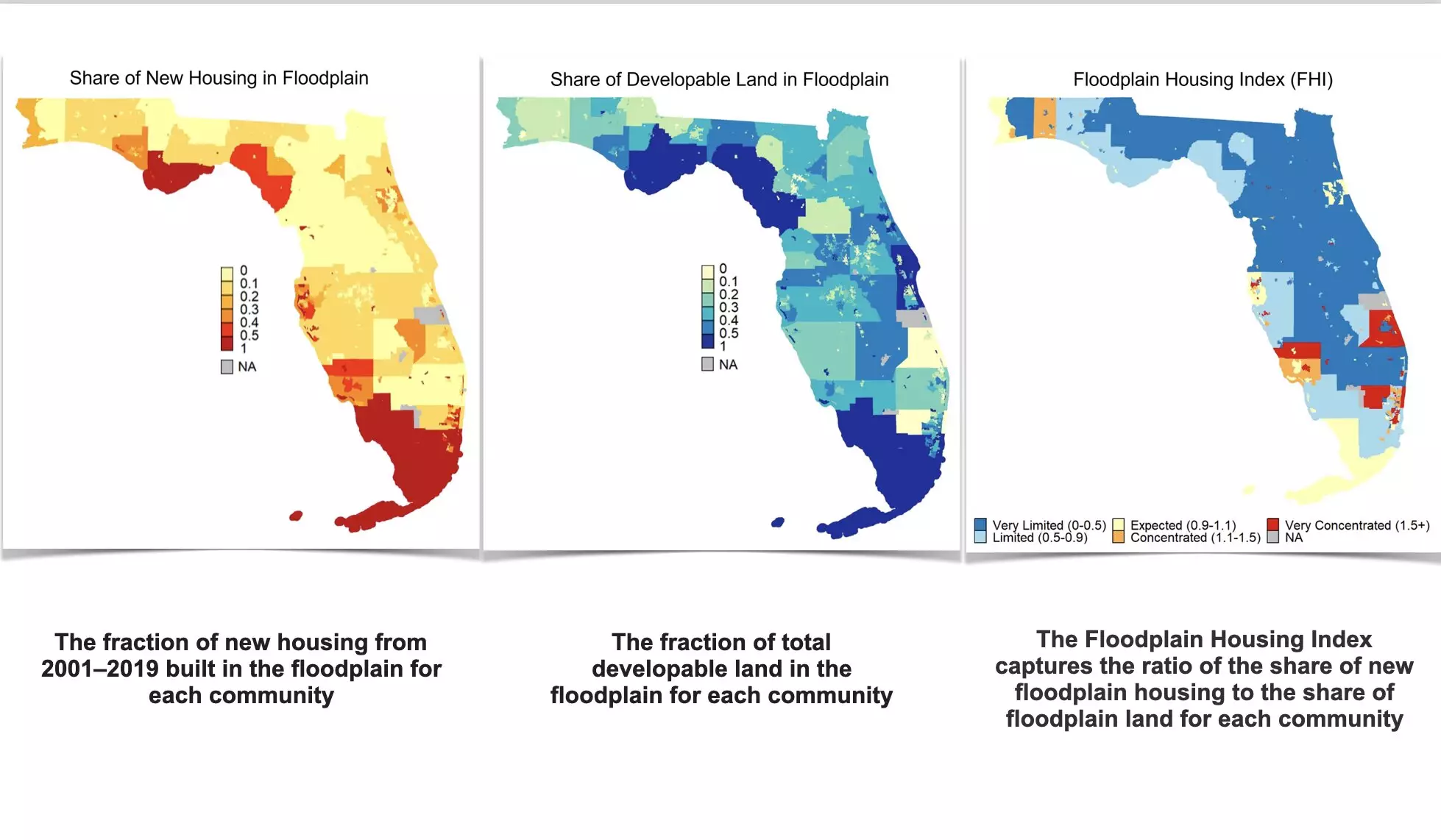Recent research from the University of Miami has unveiled significant insights into floodplain development in the United States, indicating that over two million acres have been developed in these high-risk areas over the past 20 years. What is striking about this statistic is that approximately 50% of new floodplain housing has emerged in Florida alone, demonstrating a worrying trend of increasing residential construction in regions that are particularly susceptible to flooding.
The study, published in the journal Earth’s Future, showcases not only data from newly constructed homes but also integrates geospatial land-use metrics, impervious surface areas, and essential information from digital floodplain maps. This thorough analysis highlights the potential hazards posed to communities, particularly those in the southeastern U.S., where flooding incidents are frequent. Researchers estimated that around 840,000 new residential properties were built in flood-prone areas across the nation, with Florida accounting for a substantial 398,000 of those units—an alarming figure that represents 21% of all new housing in the state.
Interestingly, lead author Armen Agopian revealed that the actual number of new developments in floodplains could be perceived as relatively low when juxtaposed with expectations. The study suggests that if development had occurred in proportion to the available floodplain area, nearly 40% of new housing should have been located in these zones, instead of the reported 21%. This discrepancy raises questions regarding regulatory practices and community planning decisions.
Further investigation into local government practices illuminated that a significant 74% of communities across the U.S. have actively limited new developments in floodplains. Moreover, 87% of these communities have instituted regulations to discourage housing construction in these hazardous areas. Such proactive measures indicate a broader awareness of the risks associated with floodplain development, contrasting with the aggressive expansion often seen in regions like Florida.
The analysis delves deeper into regional distinctions, observing that coastal communities demonstrate a higher inclination towards building in flood-prone areas compared to their inland counterparts. This trend could be attributed to the allure of waterfront properties and the complex interplay between local economic incentives and environmental risks.
Additionally, communities participating in FEMA’s Community Rating System (CRS) were found to have a greater propensity for floodplain development. While the CRS is designed to promote better floodplain management by offering flood insurance discounts, housing developments in these vulnerable areas suggest that merely participating in the program is insufficient for mitigating risks. Agopian emphasizes that for safe development, communities must engage both in participation and genuine improvement of floodplain management practices.
Examining the data, we see an essential narrative emerging: development in floodplains significantly contributes to the escalation of flood-related damages. Increased residential construction not only heightens the probability of flooding occurrences impacting communities but also exacerbates the consequences of those floods. Traditionally, most flood research has centered around the aftermath of major disasters, focusing on communities that have experienced significant losses. However, this study shifts the lens to those that have effectively implemented strategies to avoid floodplain developments altogether.
The researchers provide an opportunity for knowledge sharing as they highlight the successful actions of many communities across the nation that have preemptively addressed potential flooding issues. Senior author Katharine Mach points out the importance of recognizing and learning from these proactive communities, as their efforts may pave the way for best practices that can be emulated elsewhere.
As urban expansion continues, the urgency to rethink development strategies in the light of climate change and increased flooding becomes clear. Local governments must not only enforce regulations that discourage floodplain housing but also foster community awareness about the long-term risks and damages associated with such developments. There lies a critical need for collaborative efforts between policy-makers, engineers, and community advocates to create resilient infrastructures, ensuring the safety of people and assets in flood-prone regions. Ultimately, redefining our approach to floodplain development could mitigate risks, protect communities, and potentially save lives.


Leave a Reply